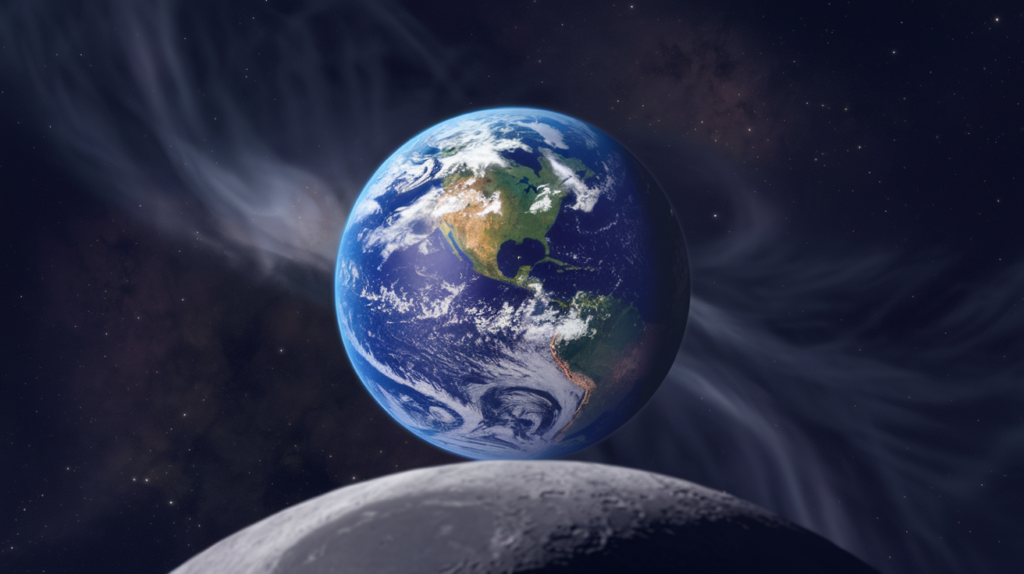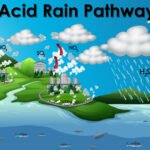Our solar system is a treasure trove of celestial wonders, each planet a unique world with its own fascinating characteristics. Yet, beyond the familiar facts we learned in school, a universe of hidden marvels is waiting to be discovered. 🌎🪐
From Mercury’s scorching surface to Neptune’s raging storms, our planetary neighbors hold secrets that continue to baffle and amaze scientists. These cosmic enigmas fuel our curiosity and challenge our understanding of the universe. Are you ready to embark on an interplanetary journey and uncover the extraordinary features that make each planet a one-of-a-kind celestial body?
Join us as we explore 7 Unique Planets in Our Solar System, delving into the scorching speedster Mercury, Earth’s evil twin Venus, the mysterious red Mars, Jupiter’s gaseous enigmas, Saturn’s majestic rings, Uranus’s peculiar tilt, and Neptune’s wild winds. Prepare to be astounded by the hidden wonders that lie just beyond our earthly home. 🚀
Also Read: How Many Stars Are In Our Solar System? Discover the Cosmic Mystery!
Mercury: The Scorching Speedster
Mercury, the closest planet to the Sun, is often overshadowed by its larger neighbors, but it remains one of the most extreme and unique planets in our solar system. Despite its proximity to the Sun, Mercury isn’t the hottest planet but has the most extreme temperature variations among all planets in the solar system.
● Extreme temperature fluctuations
Mercury experiences the most extreme temperature variations among all planets in the solar system. Due to its thin exosphere, the planet cannot trap heat. During the daytime, its surface temperature reaches a blistering 430°C (800°F), while at night, it plunges to -180°C (-290°F)—an astounding difference of over 600°C.
| Time of Day | Temperature |
|---|---|
| Day | 430°C |
| Night | -180°C |
● Shortest orbital period
Another fascinating feature is Mercury’s elliptical orbit and high-speed revolution. It takes only 88 Earth days to complete a full orbit around the Sun, making it the fastest planet in the solar system. However, it has a slow rotation, taking 176 Earth days to complete one full day-night cycle. This rapid revolution is due to:
- Proximity to the Sun
- Strong gravitational pull
- Elliptical orbit shape
● A Surface Scarred by Impact Craters
Mercury’s surface is scarred with craters, evidence of billions of years of meteorite impacts. The planet’s Caloris Basin, one of the largest impact craters in the solar system, spans 1,550 km (960 miles) in diameter. Despite its barren and hostile environment, Mercury provides crucial insights into planetary formation and the effects of solar radiation on rocky planets.
Venus: Earth’s Evil Twin
● The Hottest Planet in the Solar System
Despite being further from the Sun than Mercury, Venus is the hottest planet in our solar system. This is due to its thick carbon dioxide atmosphere, which traps heat and creates a runaway greenhouse effect, pushing surface temperatures to a scorching 462°C (864°F)—hot enough to melt lead.
| Aspect | Earth | Venus |
|---|---|---|
| Surface Temperature | 15°C | 462°C |
| Atmospheric Pressure | 1 atm | 92 atm |
| Main Atmospheric Gas | Nitrogen | Carbon Dioxide |
● Crushing Atmospheric Pressure
Venus’s atmospheric pressure is 92 times greater than Earth’s, equivalent to the pressure found 900 meters (3,000 feet) underwater. This immense force quickly crushed any spacecraft attempting to land on Venus.
● A Slow and Backward Rotation
Venus rotates on its axis opposite most planets, meaning the Sun rises in the west and sets in the east. A day on Venus is also longer than its year—it takes 243 Earth days to complete one rotation, while it orbits the Sun in 225 Earth days.
● Mysterious atmospheric phenomena
Venus’s atmosphere exhibits intriguing features:
- Sulfuric acid clouds
- Super-rotating winds
- Lightning storms
These phenomena contribute to Venus’s enigmatic nature, making it a captivating subject for planetary scientists and space enthusiasts alike.
Earth: A Unique Oasis of Life

Earth is not just another planet in the vastness of space; it is a cosmic anomaly, a world where life has flourished in countless forms. While we often take our home planet for granted, its unique characteristics make it one of the known universe’s most extraordinary and complex celestial bodies. Let’s dive deeper into the hidden wonders of Earth, exploring fascinating aspects that make it a truly exceptional world.
● The Only Planet Known to Support Life
Earth remains the only confirmed planet to host life, a privilege granted by a delicate balance of atmosphere, climate, and resources. But what makes Earth so special?
Hidden Facts About Earth’s Life-Supporting Features
- Goldilocks Zone: Earth is located in the Sun’s habitable zone, often called the “Goldilocks zone”—not too hot, not too cold—where liquid water can exist, a crucial ingredient for life.
- Bioluminescence: Over 80% of ocean life remains undiscovered, with many deep-sea creatures producing their own light through bioluminescence, a phenomenon rarely found elsewhere in the universe.
- Earth’s Atmosphere is Self-Regulating: The planet has an incredible self-regulating climate system, where the oceans, forests, and atmosphere work together to maintain stable conditions. The Gaia Hypothesis suggests that Earth behaves almost like a living organism, maintaining equilibrium to sustain life.
- Microbial Extremophiles: Earth’s harshest environments, such as hydrothermal vents and acidic lakes, host extremophiles—microorganisms that can survive extreme heat, cold, radiation, and pressure. This suggests that similar life could exist on other planets.
💡 Did You Know? Some scientists believe that Earth’s life may have originated from outer space, carried by comets and meteorites in a panspermia theory!
● Plate Tectonics and a Dynamic Surface
Earth is the only known planet with active plate tectonics, a process that shapes the land, recycles carbon, and even influences life’s evolution. The movement of Earth’s lithospheric plates creates everything from towering mountains to deep-sea trenches, keeping the planet geologically vibrant.
Hidden Facts About Earth’s Ever-Changing Surface
- The “Ring of Fire”: The Pacific Ocean is surrounded by a zone of intense seismic activity called the Ring of Fire, home to 75% of Earth’s volcanoes and 90% of earthquakes.
- Continents Are Still Moving: Earth’s continents move at the rate of about 1-2 inches per year, meaning that in about 250 million years, a new supercontinent—often referred to as Pangaea Proxima—could form.
- Deepest Point on Earth: The Mariana Trench in the Pacific Ocean is the deepest point on Earth, reaching 11 km (7 miles) below sea level—deeper than Mount Everest is tall! Some of the planet’s most mysterious life forms exist in this crushing environment.
- Volcanoes Create Life: Volcanic eruptions release minerals and gases into the atmosphere and oceans, playing a crucial role in Earth’s carbon cycle. Over millions of years, volcanic islands like Hawaii have given birth to lush ecosystems.
💡 Did You Know? If Earth had no plate tectonics, the planet would likely overheat, similar to Venus, as the movement of plates helps regulate carbon dioxide levels.
● A Protective Magnetic Field
Earth’s magnetic field is a silent guardian, shielding the planet from harmful solar radiation and cosmic storms that could strip away the atmosphere. This invisible force is powered by the motion of molten iron and nickel in Earth’s outer core, generating a geodynamo effect.
Hidden Facts About Earth’s Magnetic Field
- Without it, life might not exist: If Earth had lacked a strong magnetic field, it could have suffered the same fate as Mars, which lost most of its atmosphere due to solar wind stripping.
- It’s Always Moving: Earth’s magnetic poles are constantly shifting—the North Magnetic Pole has moved from Canada toward Siberia at speeds of 40 km (25 miles) per year!
- Auroras – The Light Show from Space: When charged particles from the Sun hit Earth’s magnetosphere, they create stunning auroras—the Northern and Southern Lights (Aurora Borealis & Aurora Australis)—seen in polar regions.
- Magnetic Reversals: Every 200,000-300,000 years, Earth’s magnetic field flips, with the north and south poles swapping places. The last reversal happened 780,000 years ago; scientists believe we may be overdue for another!
💡 Did You Know? Some animals, like birds, sea turtles, and even bacteria, use Earth’s magnetic field for navigation during migration!
Earth is a planet unlike any other—a world teeming with life, shaped by geological forces, and protected by an invisible shield. Despite centuries of exploration, we still uncover new hidden wonders of space on our own planet.
From mysterious ocean depths to shifting continents and dazzling auroras, Earth remains a dynamic and evolving world, offering endless possibilities for discovery. As we continue to study our planet, we may gain insights into how life could exist on other planets and what makes Earth such a rare gem in the vast universe.
🔭 What will we discover next about our extraordinary home planet? 🚀🌍
Mars: The Red Planet and Its Secrets
● Evidence of Ancient Water
Recent findings from China’s Zhurong rover have unveiled compelling evidence suggesting that Mars once had sun-soaked beaches with lapping waves and gentle breezes. The rover’s radar data from Utopia Planitia revealed subsurface structures resembling Earth’s shorelines, indicating the presence of ancient oceans. These formations suggest that Mars had liquid water, tides, waves, and rivers for an extended period, providing suitable conditions for life.
| Evidence for Microbial Life | Significance |
|---|---|
| Organic molecules in rocks | Possible biosignatures |
| Methane in atmosphere | Could indicate biological activity |
| Subsurface water | Potential habitable environment |
These features have intensified the search for signs of Mars’s past or present microbial life, making it a prime target for future exploration missions.
● The Tallest Volcano and Deepest Canyon
Beyond the colossal Olympus Mons and the expansive Valles Marineris, Mars’ surface features intricate networks of valleys and river channels. These formations hint at a past where water actively shaped the landscape, carving out paths and possibly sustaining life forms. Such geological features remain focal points in understanding the planet’s climatic history.
● The Search for Life
The discovery of a unique black-and-white striped rock, dubbed “Freya Castle,” by NASA’s Perseverance Rover, has sparked excitement among scientists. This rock’s unusual texture suggests a complex geological history, possibly involving volcanic activity and water interactions. Such findings provide new avenues in the quest to uncover signs of past life on Mars.
Jupiter: The Gas Giant’s Mysteries

● The Great Red Spot: A Storm for the Ages
Jupiter’s Great Red Spot, a storm that has persisted for centuries, has been a subject of fascination. Recent data from the Juno spacecraft reveals that this storm extends over 200 miles (350 kilometers) below the cloud tops, much deeper than previously thought. This insight challenges existing theories about the storm’s energy sources and longevity.
| Feature | Great Red Spot | Earth Comparison |
|---|---|---|
| Size | 16,000 km | 1.3 times Earth’s diameter |
| Age | 400+ years | Longest Earth storm: 31 days |
● The Most Powerful Magnetic Field
Jupiter’s strongest magnetic field, the planet’s strongest, is not as uniform as once believed. Juno’s observations indicate that the magnetosphere is uneven and chaotic, suggesting complex internal dynamics. This irregularity influences the planet’s radiation belts and auroras, offering new perspectives on its internal structure.
● A Gas Giant with No Solid Surface
Contrary to earlier assumptions of a solid core, Juno’s findings propose that Jupiter possesses a “fuzzy” core composed of a rock and metallic hydrogen mixture. This revelation implies that Jupiter’s formation involved significant collisions, reshaping our understanding of gas giant development.
Saturn: Lord of the Rings
Saturn, often hailed as the Ringed Beauty, is renowned for its stunning rings and harbors many lesser-known features that continue to intrigue scientists. Beyond its well-documented characteristics, here are some hidden facets of Saturn:
● Saturn’s Rings: Age and Disappearance
- Age of the Rings: Recent research challenges previous beliefs about the age of Saturn’s rings. While earlier studies suggested they were relatively young, possibly between 100 to 400 million years old, new computer models propose that the rings could be as ancient as the planet itself, dating back approximately 4.5 billion years. This theory posits that the rings have remained pristine due to their resistance to accumulating dirt from micrometeoroid impacts.
- Ring Rain Phenomenon: Saturn’s rings are gradually diminishing due to a process known as “ring rain,” where charged water particles from the rings descend onto the planet. This phenomenon is causing the rings to deplete faster than previously anticipated, with estimates suggesting they could vanish in about 100 million years.
Their complex structure includes:
| Ring | Composition | Characteristics |
|---|---|---|
| A | Ice and rock | Brightest, outermost |
| B | Ice | Faint inner ring |
| C | Ice and dust | Faint, inner ring |
● Saturn Could Float on Water
Saturn’s low density, less than water’s, means it would float if placed in a sufficiently large ocean. This characteristic underscores the planet’s unique composition and internal structure, dominated by hydrogen and helium.
● The Mysterious Hexagonal Storm
The persistent hexagonal storm at Saturn’s north pole, spanning approximately 25,000 kilometers, baffles scientists. Over decades, its geometric precision and stability have raised questions about the atmospheric dynamics sustaining such a structure.
● Moons That Could Harbor Life
Saturn’s moon, Enceladus, exhibits geysers ejecting water vapor, hinting at a subsurface ocean that could support microbial life. Similarly, Titan, with its thick atmosphere and hydrocarbon lakes, presents conditions that, while vastly different from Earth’s, could potentially harbor life forms.
● Hexagonal storm at the North Pole
A unique hexagonal-shaped storm rages roughly 25,000 kilometers across Saturn’s north pole. This persistent atmospheric phenomenon, discovered by NASA’s Voyager mission, has puzzled scientists for decades. Its longevity and geometric shape make it one of the most intriguing features in our solar system.
Uranus: The Tilted Ice Giant
● Extreme axial tilt
Uranus’ axial tilt of 98 degrees sets it apart from other planets. This extreme tilt causes unusual seasonal changes, with each pole experiencing 42 years of continuous sunlight followed by 42 years of darkness. The tilt also affects the planet’s magnetic field, creating a unique orientation.
| Feature | Uranus | Other Planets |
|---|---|---|
| Axial Tilt | 98 degrees | 0-30 degrees |
| Seasons | 42-year cycles | Yearly cycles |
● Blue-green color due to methane
Uranus’ distinctive blue-green hue is attributed to its atmospheric composition. Methane in the upper atmosphere absorbs red light and reflects blue-green wavelengths, giving the planet its characteristic color. Its unique appearance and faint ring system make Uranus a remarkable celestial body.
Neptune: The Windiest World
● Supersonic winds
Neptune’s atmosphere is characterized by incredibly fast winds, reaching speeds of up to 2,100 kilometers per hour. These supersonic winds are the fastest in the solar system, far surpassing those on other planets. The intense wind patterns create distinct bands and features in Neptune’s atmosphere, including the famous Dark Spot.
| Wind Speed Comparison | Neptune | Earth | Jupiter |
|---|---|---|---|
| Maximum Speed (km/h) | 2,100 | 408 | 620 |
● Dark Spot: A dynamic storm system
Neptune’s Dark Spot is a massive storm system comparable to Jupiter’s Great Red Spot. Neptune’s Dark Spot is more dynamic and short-lived than its Jovian counterpart. These storm systems:
- Can be as large as Earth
- Last for several years
- Appear and disappear over time
- Contribute to the planet’s dynamic atmosphere
Final Thoughts: The Unmatched Diversity of the Solar System
Our solar system is a treasure trove of celestial wonders, each planet offering its own unique characteristics and mysteries. From Mercury’s extreme temperatures to Neptune’s fierce winds, these seven planets showcase our cosmic neighborhood’s incredible diversity and complexity. The exploration of these worlds continues to challenge our understanding of planetary formation and evolution, providing invaluable insights into the nature of our universe.
As we delve deeper into space exploration and technological advancements, the secrets of these planets may gradually unfold, revealing even more astonishing discoveries. The ongoing study of our solar system satisfies our innate curiosity and holds the potential to unlock crucial information about the origins of life and the possibility of habitable worlds beyond Earth. Embracing this cosmic journey of discovery reminds us of the vastness and wonder of our universe.
-
1. Which planet has the most extreme weather?
Neptune takes the crown for the windiest planet, with supersonic winds reaching 2,100 km/h.
-
2. Why is Venus hotter than Mercury?
Venus experiences a runaway greenhouse effect, trapping heat and making it hotter than Mercury despite being further from the Sun.
-
3. What makes Uranus so unique?
Uranus’ 98-degree tilt causes 42-year-long seasons, making it the only planet that rotates almost sideways.
-
4. How long has Jupiter’s Great Red Spot existed?
The Great Red Spot has been raging for over 400 years, making it the longest-lasting storm in the solar system.
-
5. Do any planets have rain?
Venus rains sulfuric acid, and on Saturn’s moon Titan, methane rain falls instead of water.





